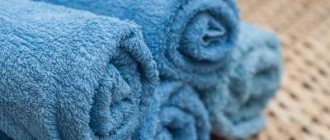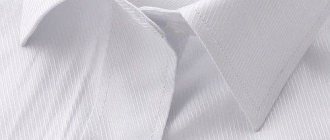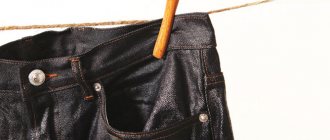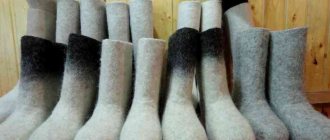Angora is a fabric that is obtained from the fluff of the Angora goat or Angora rabbit. It is a very soft, warm and elegant material with a silky sheen. Jackets and sweaters, hats and dresses, shawls and scarves, blankets and other products are knitted and made from angora.
However, during operation, the fibers begin to stretch and come out, so mixed fabrics with the addition of other fibers are in high demand. But even in this case, things require special care. In this article we will look at how to wash an angora jacket correctly.
Features of Angora
Today you can find items made from mixed materials: a mixture of merino and llama wool, acrylic, viscose and polyester. Products with the addition of synthetic fibers are the most affordable and durable, but during use they lose their thermal insulation properties and aesthetic appearance.
A mixture of angora down and natural materials, such as wool, creates more refined, elegant and luxurious products. They retain their thermal insulation qualities longer, but are also more expensive.
But the most popular due to their availability, strength and durability are products with the addition of synthetic fibers. Most often, these are things with a down content of 10-20%, acrylic 50% and polyester 40%.
Adviсe
When washing sweaters, it is important to follow a few tips:
- Rinsing in cool water with the addition of fabric softener will help reduce the ability of synthetic sweaters to accumulate static electricity.
- Rinsing in water with added glycerin will help restore softness and fluffiness to the angora product.
- It is prohibited to use dry abrasive powders to wash jackets. Ignoring this recommendation may result in very small tears in the knitted fabric.
- It is strictly forbidden to dry a jacket on a radiator, near an open fire.
If you are interested in how to wash and clean outerwear, take a look here.
Rules for washing items made from angora wool
Before washing a sweater and other items made from angora, be sure to read the label and follow the recommendations. As a rule, such products can only be washed by hand. In exceptional cases, you can use an automatic machine. Choose a delicate or hand wash program.
Wash the product separately from others! For delicate garments, sew the buttonholes closed to prevent them from stretching. For washing and rinsing, choose a water temperature of 27-37 degrees.
Under no circumstances should strong and sudden temperature changes be allowed, otherwise the material will deform and lose its elasticity and original shape. Do not use hot water, as the item will shrink after washing it.
Dilute a suitable product in water and put an angora hat or any other thing there. If you wash a bedspread, blanket or bulky item, it is better to wash it directly in the bath.
Clean the product carefully, lightly scrunching the material with your hands. Treat stains and contaminated areas with additional detergent. Also, stains can be cleaned with a brush first and then washed. After the main wash, rinse the Angora fabric thoroughly several times.
Program selection
Each automatic washing machine has several programs designed to process various materials. Gentle washing is carried out using the “Delicate” mode. During spinning, the rotation speed of the drum decreases, preventing damage to the product. This mode is suitable for washing: silk, satin, viscose, angora, wool.
When the delicate mode is set, the drum operates intermittently. This allows you to completely eliminate deformation of a delicate item.
Angora laundry detergents
- Do not use powder products, as grains are difficult to wash out of fabric fibers even after thorough and repeated rinsing. Do not use acids, alkalis or various bleaches;
- Liquid detergents, including gels and shampoos for washing wool, work well. They have a soft and gentle effect on the material, are easy to rinse and at the same time wash the fabric well. Which washing gel is better to choose, see here;
- White baby soap without fragrances and dyes or standard laundry soap should be grated on a fine grater and diluted in water;
- A good quality mild hair shampoo and baby shampoo are suitable. It is important that the product does not create a large volume of foam;
- To rinse, use a special conditioner or glycerin. Dilute a teaspoon of glycerin in ten liters of water and rinse the product in the resulting solution. As a result, the fabric will remain soft and will not mat.
Washing in a washing machine
If you decide to wash your sweater in an automatic machine, then first of all you should carefully study the recommendations from the manufacturer, reading them on the label. As a rule, this is washed by hand or in the “Delicate Wash” mode. It is worth noting that the use of detergents is identical to that for hand washing. Important: it is not recommended to perform the spin procedure at any speed, otherwise you will have to say goodbye to the original appearance of your sweater.
How to dry angora clothes correctly
After washing, wrap your clothes in a terry towel to absorb moisture. Leave a large blanket or blanket to lie in the empty bath for ten minutes. Then roll the fabric into a roll, take it by the middle and lean it on the wall of the bathtub to form a structure in the shape of the letter P.
When the water has drained slightly, lay things out on a horizontal surface in a well-ventilated area. Smooth and level the canvas, remove folds and creases, and leave to dry completely.
Do not dry items on a hanger, hangers or hanging, otherwise they will stretch and lose their shape. Do not dry things in direct sunlight, on a radiator or using electrical appliances.
An Angora hat or other headdress is dried on a net, which is covered with a light cloth. To keep the product in shape, the hat can be pulled over a jar or blank, and the beret can be pulled over a plate. It is important that they fit exactly the size of the hats.
When the products are dry, comb the lint with a soft brush along the growth of the lint. Finish by sweeping the brush in the opposite direction to prevent pilling and material shedding. To make a sweater, hat or other item fluffy again, wrap the clothing in plastic and put it in the freezer for 8-15 hours.
The main stage is drying
But the most important and responsible stage, both in hand washing and using a machine, is the correct and safe drying of your product.
Important! It is strictly forbidden to hang a damp sweater on various ropes, dryers and other household appliances. Also, do not rush the drying process of the sweater by placing it near heating devices or radiators.
To begin, we take a large, dry terry towel with large pile and wrap our wet sweater in it, doing this carefully and neatly. And we wait for the towel to absorb the excess moisture. And only then we carefully lay out our product on a flat horizontal surface, preferably with a fresh, dry terry towel on it. Thanks to such a long and difficult drying procedure, we will return the presentable appearance of the sweater that it had when purchased.
How to bleach angora fabric
Most often, angora items are white. It is an attractive and luxurious color. However, such products quickly become dirty, turn yellow or take on a gray tint. In this case, do not use bleaches!
To bleach angora safely, add 50 grams of mild liquid detergent and five tablespoons of salt, 20 ml each of hydrogen peroxide and ammonia to warm water. Dip a light-colored item into the resulting mixture and leave for three to five hours.
Turn the product over periodically during the process. After this, wash the angora with a suitable detergent, rinse several times, and then dry as usual. It is important to properly care for items made of Angora wool so that they retain their original qualities and appearance longer.
Store such products folded on shelves. Do not hang sweaters or dresses on hangers, unless these are special hangers for woolen items and sweaters. Do not use plastic, polyethylene or other synthetic bags or covers for clothing for storage. If an item has been lying for a long time and has become wrinkled, hang the item in the bathroom for a day and it will straighten out. How and where to properly store clothes in the house, see the link.
Small tricks on how to add fluffiness
Well, the last stage is the return of the former pomp or fluffiness. To do this, you just need to carefully comb the sweater with a soft bristle brush.
Advice! Please note that the movements of the brush should be directed along the pile, and at the very end, scratch a few times against the grain.
If you follow all the nuances of gentle care, your favorite sweater will delight you for a long period. It is worth noting that all of the above tips can rightly be attributed to any things and products made from this amazing fabric (hats, mittens or socks).
Merino wool blanket
How to fold a shirt
How to wash a pompom hat
If the pom pom is made from the same material as the knitted hat, there is no reason to clean it separately. After washing, comb the pompom. If the threads are very matted, use a knitting needle to separate them.
If the hat decorations are made of fur, you will have to tear them off before washing. If this cannot be done for some reason, wrap the pompom tightly in a bag and cover the place where it is attached with rubber bands so that water does not reach it. Then wash the hat by hand. If a little bit of water gets on the pom pom, it will most likely not be damaged.
How to dry a hat
Whatever your hat is made of, it's best not to try to wring it out after washing. To prevent water from flowing from it, use a terry towel - just wrap the item in it without twisting it.
A synthetic hat can be hung on a rope by the pompom. But still, the best way to avoid deformation for all knitted hats is to lay them out on a towel to dry.
Nuances depending on the color of the product
White sweaters are washed only by hand, using a special whitening shampoo.
Algorithm of actions:
- Warm water (no more than 30°C) is filled into a basin and liquid detergent with a bleaching effect is added (the dosage is indicated by the manufacturer on the packaging).
- The item is immersed in water, gently wrung out and crumpled.
- After washing, rinse the product thoroughly in cold water.
Rinsing in water with the addition of freshly squeezed lemon juice will help keep your favorite item white.
Colored and black sweaters are washed separately (including from white items). The first wash of a new colored or black item must be done by hand .
This will help make sure whether the product is shedding or not. The jacket can be washed again either in a washing machine or by hand (manufacturer's recommendations are indicated on the tag).
Basic rules for washing black and colored items:
- water temperature not higher than 30°C;
- choosing laundry detergents only in favor of liquid formulations for colored and black items (they do not wash out the colored pigment from the fabric);
- minimum spin speed;
- wash on the “delicate fabric” or “wool” mode;
- dry only in a dark, well-ventilated place.
What is used for washing
You can buy any beautiful item made from Angora rabbit wool: a dress, a beret, a hat, a jacket, an elegant shawl or a warm sweater. In order for the product to remain new for a long time, you need to familiarize yourself with the recommendations on how to wash clothes made from angora. Clothes should be cleaned after 4-5 wears, depending on the degree of soiling. When it comes to washing an angora so that it doesn’t shrink, you don’t have to turn to specialists for help—you can refresh your favorite wardrobe item at home without any unpleasant consequences.
You can wash angora items using the following products:
- White baby soap without dyes or fragrances;
- Glycerin;
- Regular laundry soap;
- High-quality hair shampoo (you must choose one that forms a minimum amount of foam);
- Branded detergent designed for wool.
Glycerin for how to wash an angora jacket is mixed with children's or household items in a container with warm water. The maximum permissible temperature is 37 degrees. It is not recommended to use washing powders and bleaches, even the highest quality ones. Many housewives are concerned about the question of how to wash angora in a washing machine. Machine cleaning is not advisable, but in delicate mode (not automatic!) and at a minimum temperature you can clean your favorite item. When washing, you can add a mild wool conditioner. Be sure to turn your clothes inside out.
Restoring angora clothing
Even if a jacket or other clothing has lost its appearance, you can try to restore it. To do this, do not rush to the store for special expensive products. The most effective formulations can be found in every home.
How to restore its softness and fluffiness:
- Freezer. This is the simplest method that does not require additional investment. The angora sweater should be placed in a clean plastic bag and placed in the freezer. Leave it there overnight. After this, lay the clothes out on a horizontal surface and let them warm up to room temperature. This extreme method will restore elasticity and shine to the fibers.
- Glycerol. It is better to purchase it immediately along with angora clothing. While rinsing, add 1 teaspoon of product to the water. It is recommended to repeat this procedure every time you wash.
- Turpentine and ammonia. Fill a bucket with warm water. Grate half a bar of laundry soap on a coarse grater and dissolve in water. Add 1 tbsp to soapy water. l turpentine and 2 tbsp. l ammonia. Soak the jacket overnight. It is not recommended to keep the product for longer than 12 hours. After this, rinse with an appropriate conditioner and dry.
- Ammonia and medical alcohol. It is necessary to dissolve 1 cup of soap shavings in a bucket of warm water. Stir and add 15 ml of ammonia and 5 ml of pure medical alcohol. Soak clothes. After 10-12 hours, remove the product, remove excess moisture, and dry a little with a terry towel. Lay the jacket out on the table and cover the top with a thin cotton cloth. Iron and finish drying.
After final drying, the items should be combed with a wide-toothed brush.
In order for angora items to last longer as mono, you should follow a few simple rules. How to extend the life of an Angora:
- Of all the new things, angora fluff will come out in large quantities. This is the norm. This is the peculiarity of this material. But the amount of fluff that falls out can be reduced somewhat. To do this, simply wash angora items in the required mode. After things dry, you need to shake them thoroughly. This will remove loose lint.
- There is no need to change the temperature of the washing and rinsing water much. A sharp drop has an aggressive effect on the fibers and they will lose their elasticity, which is extremely undesirable for the quality of the item.
- Always wash items on the wrong side only, this will help maintain the integrity of the fibers.
- Before cleaning, be sure to sew up buttonholes, if any. Otherwise, the loops are easy to stretch during the washing process.
Thus, it is not difficult to wash angora clothes; it is only important to follow the regime and choose a safe detergent for washing. If these conditions are met, the product will easily survive repeated machine and hand washes and at the same time retain its appearance and unique properties.
If your trip to second-hand stores was a success and a wonderful blouse, sweater, shawl or dress made of the most delicate angora appeared in your wardrobe, you are probably wondering how to wash this thing now. You can take your favorite blouse to the dry cleaner, or you can freshen it up at home, without any unpleasant consequences.
What do you need for home washing? First of all, soap and glycerin. You should not use washing powder to wash angora products, no matter how gentle it is. It’s better to pour warm (36-37 degrees) water into a basin, pour laundry soap into it and add a teaspoon of glycerin. You can buy glycerin at any pharmacy.
Some experienced housewives advise using shampoo instead of soap. But shampoos are characterized by increased foaming, and this foam will then be quite difficult to rinse out of a knitted item.
Now stir the mixture and carefully immerse the angora items into it. After washing, you must very carefully rinse the soap from woolen items and lightly wring them out. Under no circumstances should sweaters, dresses, shawls, hats and other products made from Angora wool be twisted or deformed in any way!
The next stage is drying. Neither ropes outside the window, nor household appliances, nor, especially, heating appliances are suitable for her. A freshly washed item should be wrapped in a terry towel so that the fabric absorbs moisture. Then the wet clothes should be laid out on a wire rack or towel and wait until they are completely dry.
Finally, the last stage. The fluffy angora needs to be combed with a brush. You should brush in the direction of the pile, and only at the end run the brush against the pile several times. Now the wool definitely doesn’t mat.
By the way, if you put a piece of Angora wool that has lost its original fluffiness in the freezer for 15-16 hours, the cold will return “increased shaggyness” to your favorite sweater or shawl. And you can once again enjoy the softness and cozy warmth of Angora wool.
Many people have things made from angora. Before we talk about ways to care for them, you need to know their composition. Angora is the natural wool from the Angora goat or Angora rabbit.
A breed of Angora rabbits with long, soft hair was developed in China. Currently, it is from it that angora, a woolen fabric, is made. Yarn made from the wool of Angora goats is called mohair. There is still confusion with these concepts.











